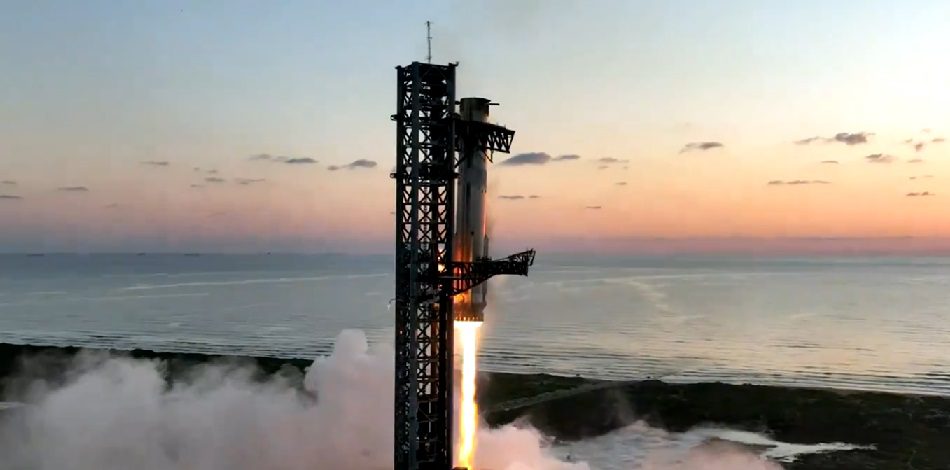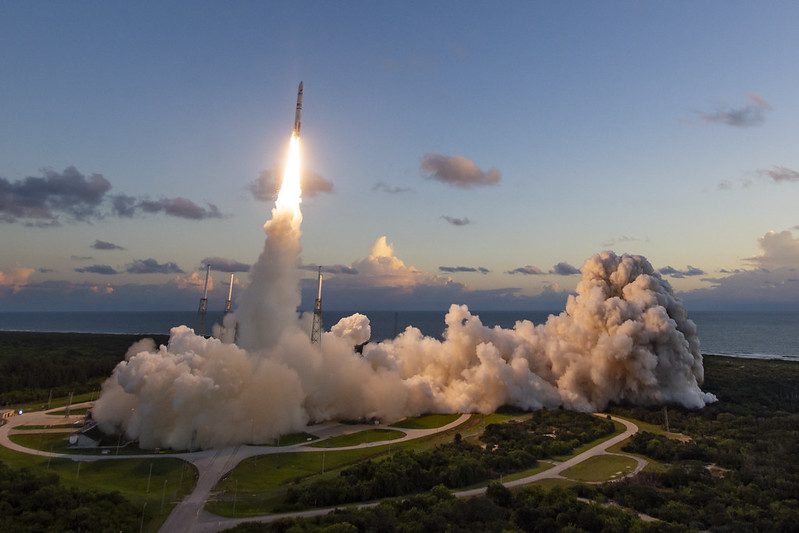Following on from this blog and this story Hyperbola has received more responses from NASA and the US government’s Environmental Protection Agency (EPA) regarding the issue of perchlorate
Just to recap the EPA has been rethinking the issue of perchlorate and its levels in water with the possibility of it deciding that limits need to be placed on this chemical
At the same time that EPA is considering this issue, with a possible decision later this month, NASA’s Glenn Research Center (GRC) decided to procure technology from Sweden, of all places, to find an alternative to ammonium perchlorate (AP) called ammonium dinitramide (ADN)
The space agency uses AP as an oxidiser for Space Shuttle solid rocket boosters and plans to use with its Ares I crew launch vehicle’s first stage solid rocket. But ADN is clearly an attractive alternative. Here is part of NASA’s (very long) response that exlpains why ADN is of interest
Ammonium dinitramide (ADN) is a very attractive ingredient based on the
theoretical specific impulse (Isp) of propellants that use it as an
oxidizer. An increase of about 4 percent is possible if one were able to
simply substitute ADN for ammonium perchlorate. However, the density of ADN
is about 8 percent less than that of AP. For large boosters, a better
figure of merit for performance is the impulse*density product. When
Isp*density is considered, a typical HTPB propellant oxidized with AP has
greater performance than a similar propellant using ADN. Nonetheless, there
has been a lot of research conducted on ADN and propellants using ADN
because of its potential uses as an AP replacement, or as an oxidizer in
reduced signature propellants where the use of AP is unacceptable.
And here the agency explains why its not changing the Ares I first-stage right away
In summary, both ATK & NASA have an active interest in ADN, as well as
similar energetic oxidizers and fuels, and are very interested in further
evaluation of ADN as advancements are made. However, the maturity and
therefore applicability of ADN to either ARES I or ARES V systems is
unfeasible at the current time.
Unfeasible at the current time, well of course that is why you do research. And why is GRC buying the Swedish technology now? Coincidence? The last time GRC did ADN reseach was 1999
Anyway, wondering what an EPA decision would mean for NASA, I asked them, EPA that is. They said
EPA cannot speculate about what NASA would/wouldn’t do if we were to issue/not issue a regulation. Any rule would apply to public water systems, not to the use of a particular contaminant by any type of business activity. NASA would be best equipped to answer your question.
But if you have open water reservoirs (we do here in the UK) and you have an activity that sees tonnes of perchlorate spread into the local atmosphere, isn’t that a bit of an issue?
NASA can’t even use some of the chemicals originally part of the Apollo Command Module heat shield material Avcoat. The Avcoat it is now analysing for Orion crew exploration vehicle is a “reformulation”
Well, I have NASA’s answer (I had it before EPA replied, bascially) and I think it means “watch this space”. In the mean time I am going to contact some Floridian environmental organisations and see what they think
While I’m doing that, here is the rest of NASA’s lengthy explanation about ADN
Work conducted by ATK in the late 1990¹s found ADN to be a hazards class 1.1
oxidizer that was hygroscopic, light sensitive and possessed a low melting
point and low decomposition temperature. A number of advancements that
improved temperature stability of the ADN raw material and its particle
shape were identified as a result of this work. However, propellant
temperature stability remained far less than that of AP-oxidized propellants
with autoignition occurring at about 200 degrees F less than that of
comparable AP-oxidized propellants.In addition, particle packing still did not permit ADN to be used at
oxidizer levels comparable to AP. To obtain the performance levels desired
and overcome the lower propellant density, ADN oxidized propellants required
energetic binders and additives. In a side-by-side comparison with a
hazards class 1.3 candidate propellant oxidized with AP, the ADN-oxidized
analog had much greater shock sensitivity and would almost certainly have
been class 1.1 which is a significant increase in the hazard classification
and therefore severe limitations to shipping and handling of the loaded
segments.A manufacturing feasibility assessment also found ADN propellants to have
less ballistic tailorability than analogous AP propellants as well as
substantial challenges in the scale to production scale.





